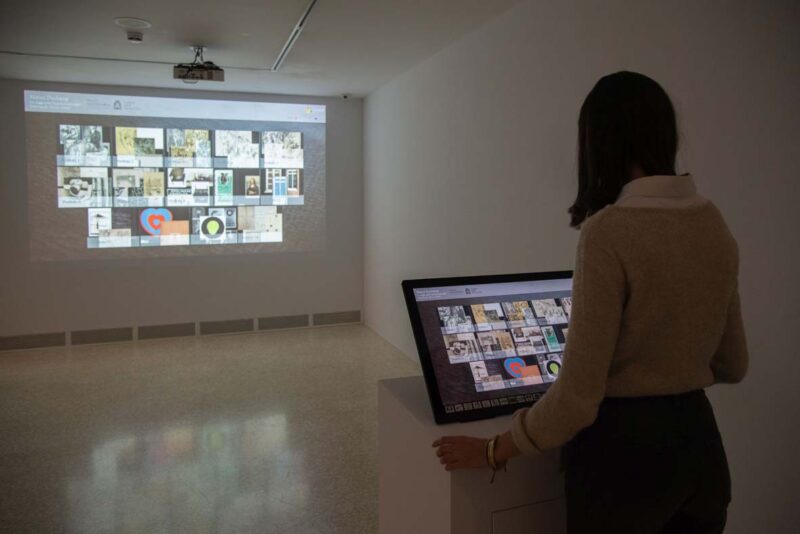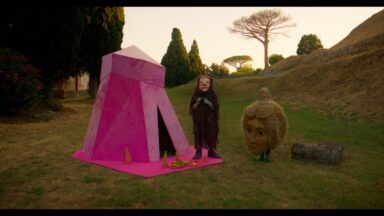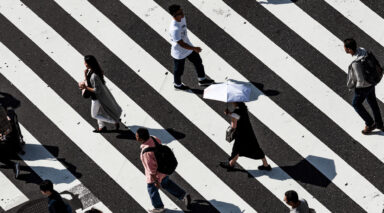An exhibition about The Box-in-a-Suitcase by Marcel Duchamp at Peggy Guggenheim Collection in Venice
In the heart of Venice, the Peggy Guggenheim Collection and the Opificio delle Pietre Dure of Florence have come together to create an unprecedented cultural experience. “Marcel Duchamp: A Journey into the ‘Box in a Suitcase'” is an extraordinary event that offers a unique glimpse into the mind of a 20th-century art genius. This exceptional exhibition, in conjunction with “Marcel Duchamp and the Seduction of the Copy,” curated by Paul B. Franklin and on display at the Peggy Guggenheim Collection from October 14, 2023, to March 18, 2024, provides an in-depth look at the work “Box in a Suitcase” (1935-1941) through an extraordinary multimedia installation created by experts in the field.
The intention of “Marcel Duchamp: A Journey into the ‘Box in a Suitcase'” is twofold. On the one hand, it invites us to explore the world of an art conservator and restorer, revealing the technical choices and materials used by the artist to create an icon of 20th-century art. On the other hand, it introduces us to the sophisticated scientific techniques employed to deepen our understanding of the work and ensure its better preservation. Videos and touch screens allow visitors to examine the work as a unified entity or explore each of the 69 elements that compose it, revealing Duchamp’s complex construction system.
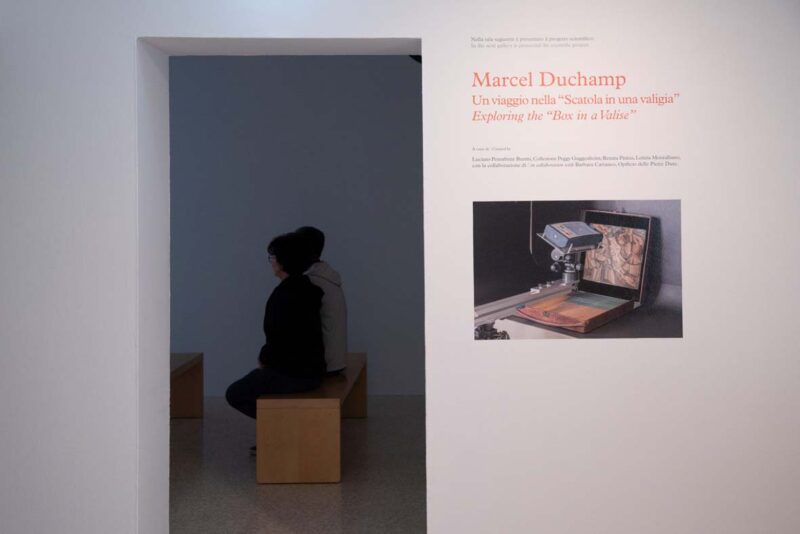
The “Box in a Suitcase” is the first of a series of twenty deluxe travel cases, each containing sixty-nine reproductions and miniaturizations of famous works by the French artist Marcel Duchamp. With this project, Duchamp aimed to create a portable museum of replicas, using sophisticated reproduction techniques such as pochoir, similar to stenciling. In addition to miniature reproductions of his works, each case contains a unique “original,” differing in small details and content. The original in the Peggy Guggenheim Collection’s case is a reproduction of the painting “The King and Queen Surrounded by Swift Nudes” (1912), now preserved at the Philadelphia Museum of Art, and it was hand-colored by Duchamp (coloriage original). This case also includes a dedication to Peggy Guggenheim, who generously supported Duchamp in this endeavor, a miniature of the famous “Fountain” (an inverted urinal) from 1917, and a reproduction of the famous “ready-made” rectified in 1919, a postcard featuring Leonardo da Vinci’s “Mona Lisa” to which Duchamp added a beard and mustache, along with the inscription “L.H.O.O.Q.,” a sequence of letters pronounced in French that forms the phrase “elle a chaud au cul,” freely translated by Duchamp as “there is fire down below.” During his lifetime, Duchamp created a total of 312 examples of the “Box in a Suitcase.”
This extraordinary compendium work was created using a wide variety of materials and techniques, including calfskin, cardboard, wood, stiff canvas, waxed canvas, velvet, ceramic, glass, cellophane, plaster, metallic elements, typographic printing, collotype, and lithography on paper, cardboard, canvas, and cellulose acetate with tempera, watercolor, pochoir, ink, graphite, vegetable resins, and natural rubber. The restoration of this polymaterial work was an ambitious project coordinated by the conservation department of the Peggy Guggenheim Collection and the Opificio delle Pietre Dure. Thanks to their expertise and collaboration with the Opificio delle Pietre Dure, which has eleven restoration sectors, a service dedicated to the conservation of contemporary art, and a scientific laboratory, they were able to address the challenges associated with preserving such diverse materials.
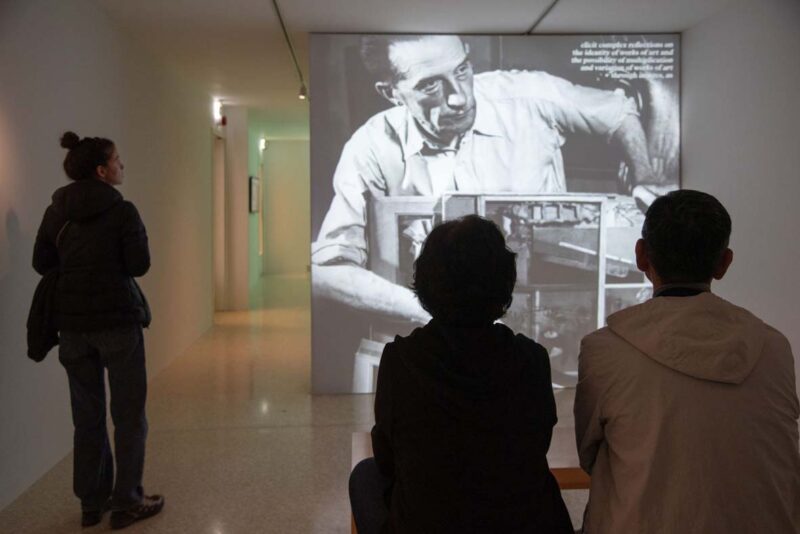
The restoration was conducted in two phases, in 2019 and 2023, with generous support from EFG, an Institutional Patron of the Peggy Guggenheim Collection since 2006. Diagnostic investigations were essential to identify the techniques used by Duchamp and reconstruct the complex assembly method of the pieces. Given that this was the first example of the famous deluxe suitcase series produced in the late 1930s, the main objectives were to resolve preservation issues related to such a delicate object and deepen our understanding of Duchamp’s “quasi-industrial” system that he later activated for subsequent series.
Due to the complexity of the work and its layered content, the virtual modeling of the object was essential to provide the general public with a 360° view. As is customary, the Opificio delle Pietre Dure relied on an established network of collaborations with other research institutes dedicated to the scientific study of art materials, particularly with the National Institute of Optics of the CNR.
A key concept that permeates Marcel Duchamp’s work and deserves mention in this context is the “Objet Trouvé,” or “Found Object” in French. This term refers to everyday objects, often overlooked and insignificant, that are selected and designated as works of art by the artist. Duchamp, along with other avant-garde artists, fully embraced this concept, which played a fundamental role in his revolutionary creative work. Duchamp’s ready-mades, such as the famous “Fountain” (an inverted urinal), are emblematic examples of how he took common objects and elevated them to the status of art through their presentation in an artistic context. This innovative approach to art has profoundly influenced how we see and understand the concept of “art” and has opened doors to a broader and more inclusive view of art itself. “Marcel Duchamp: A Journey into the ‘Box in a Suitcase'” offers a unique opportunity to explore this revolutionary artistic philosophy and how Duchamp applied it to his work, including the “Box in a Suitcase.”
